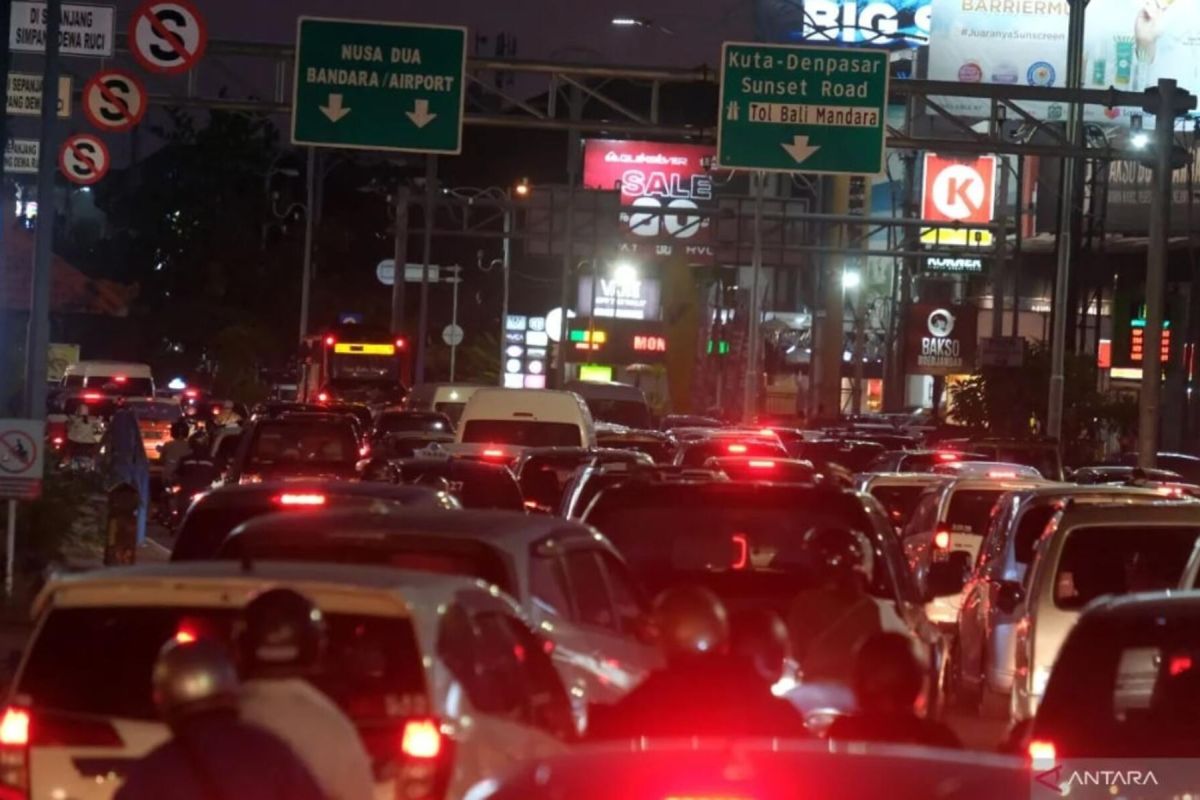Jakarta (ANTARA) - Bali is one of the most sought-after tourist destinations in Indonesia, drawing tourists from around the world with its beautiful beaches, unique cultural attractions, and hospitality.
Earlier this year, three foreign airlines proposed new and additional routes to Bali, according to the Tourism and Creative Economy Ministry. Some airlines also increased their flight frequency to Bali, connecting Middle Eastern and European countries with the island.
Minister of Tourism and Creative Economy Sandiaga Salahuddin Uno expressed the hope that the additional connectivity would help reach the main quality tourism markets, namely Australia, America, Europe, and Asia.
However, even as Indonesia woos more tourists, Bali, nicknamed "The Island of Gods," is facing several transportation challenges, such as traffic snarls in several crowded spots, which could put a strain on tourism.
When tourists wish to travel from Bali's I Gusti Ngurah Rai International Airport area to their accommodation or city areas, they often rely on four-wheeled private vehicles, such as taxis or rental cars. During the holiday peak season, this often leads to traffic jams.
Last year, during the Christmas and New Year holidays, the government approved a short-term plan to operate shuttle buses to anticipate congestion on routes connecting the airport with local activity centers.
"We agreed to operate the shuttle buses that accommodate people from the airport to the regions of Nusa Dua, Kuta, Legian, and Canggu," Transportation Minister Budi Karya Sumadi said.
The short-term plan was devised following a heavy flow of vehicles during holiday peak seasons, such as the Christmas and New Year's Eve holidays, which left the airport's customers stuck in traffic.
In addition to the short-term plan, the government has prepared mid-term and long-term plans. The mid-term plan includes constructing a flyover, adding more entry and exit routes, as well as expanding parking areas.
"There will be a flyover. We will coordinate with the Public Works and Public Housing (PUPR) Ministry to make dedicated routes to connect (the airport) with activity centers, including Canggu," he informed.
LRT: Long-term solution
While shuttle buses and flyovers can accommodate the surge in tourist vehicles in Bali and support the increasing numbers of tourists coming to the island, they are still short-term solutions.
Therefore, the central government is planning to build a light rail transit (LRT) system in Bali, as instructed by President Joko Widodo (Jokowi), as a long-term solution and sustainable transportation mode in the area.
Transportation Minister Sumadi said that he is coordinating with the relevant stakeholders to execute LRT development in Bali.
"God Willing, we will launch the construction process next year," he added.
In January this year, he made a working visit to South Korea and China to discuss cooperation in the railways and aviation sectors, including the Bali LRT project During the visit, he met with ministers and industry representatives from the two countries.
"Among others, we discussed a plan to build a Light Rail Transit in Bali," he said on January 9, 2024.
In South Korea, he met with South Korean Deputy Minister of Land, Infrastructure, and Transport, Sang-woo Park, as well as the leaders of Korea National Railway and Eximbank to discuss continued cooperation in the construction of LRT Bali, Phase 1, from Ngurah Rai Airport to Central Park.
Baca juga: Tiga Kapal Pinisi siap berlayar layani wisata Kota Nusantara
"The Bali LRT will be the first rail-based mass transportation in Bali, and is expected to be the solution to traffic jams. We hope that the feasibility study, which started in early January 2023, can finish in mid-2024," the minister said.
Electric bus rapid transit
In addition to the LRT project, the local government is also developing an electric bus rapid transit (eBRT) system, which will be integrated with an intelligent transport system (ITS) and made operational next year.
Head of the Bali Transportation Office, I.G.W. Samsi Gunarta, said that the eBRT is expected to start operating in two "corridors" or routes in 2025. The bus service is expected to provide certainty to passengers regarding travel and arrival times.
He explained that for the electric buses to operate efficiently, they must not encounter obstacles on the road. Therefore, dedicated lanes will be created and restricted from being used by private vehicles.
"An integrated IT-based system is needed," he stated.
Baca juga: MRT Jakarta fokus mengembangkan sistem pembayaran "seamless"
He added that his side will also socialize the eBRT system beforehand, as the dedicated lanes will occupy space that is currently used by the public.
However, there is a challenge. According to I Made Rai Ridharta, chairperson of the Indonesian Transportation Society (MTI) - Bali, limited road space would be an obstacle to the development of public transportation on the island.
"Building a special road is not possible due to limited space," he added.
Understanding Bali’s challenges
The congestion along the routes to and from Bali airport has also been contributed by a simultaneous increase in the movement of people and goods, according to Bali acting governor Sang Made Mahendra Jaya.
"In Bali, we have 'dewasa ayu,' or days deemed as good moments (auspicious) for conducting various activities, such as weddings and religious rituals. This led to a simultaneous increase in the mobility of people and goods," he explained.
However, he said that his side will coordinate with the relevant stakeholders to ensure a sound level of safety and comfort for all people visiting Bali.
Bali, the iconic tropical island, admired and praised by tourists from all over the world, must not lose its charm because of transportation issues. With the help of technology, cooperation, and sustainable solutions, Bali can reduce traffic jams and provide convenient mobility, both for residents and tourists.










